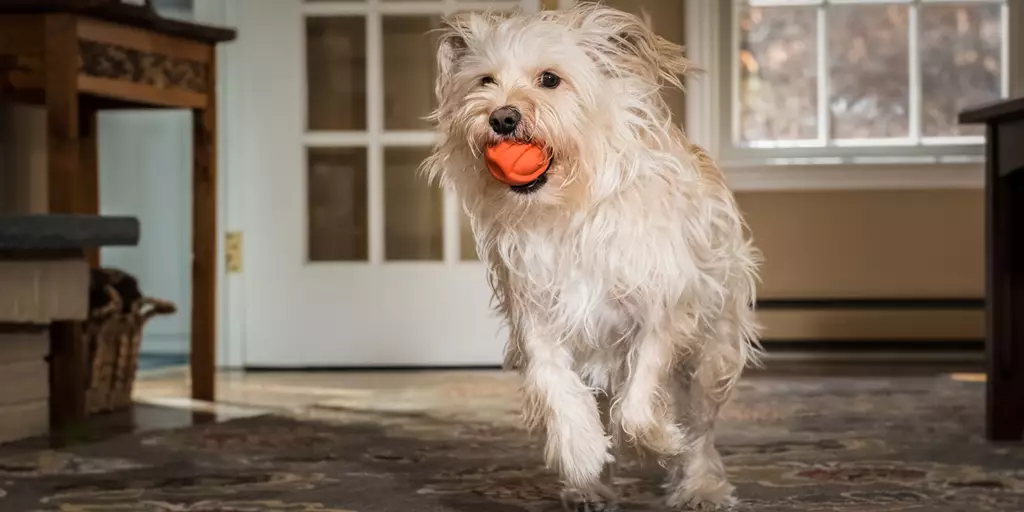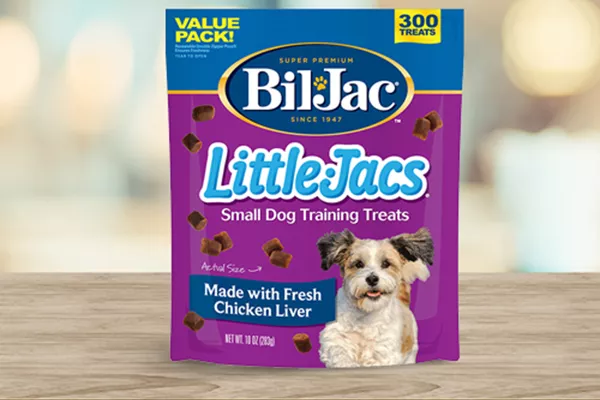8/10/2021
Dog Zoomies: What They Mean for You and Your Furry Friend

Does your dog ever get a case of the zoomies? Even if you’re not familiar with the term, there’s a fair chance you’ve seen your furry friend run around from room to room at top speed. The dog zoomies are real… but are they a good thing?
It turns out that the occasional zoom session is a perfectly healthy process. Still, the practice invites so many questions about why dogs run around the house and what pet parents should do about the zoomies. Read on to find the answers to these questions and more.
Why Do Dogs Get the Zoomies?
Animal behaviorists think that this type of dog behavior, also known as a frenetic random activity period (FRAP), is a way for dogs to burn excess energy. Nobody is sure exactly why our four-legged friends decide to run in circles on a whim – but that doesn't mean these short-lived bursts of energy are bad news.
“We don’t know a lot about them, but we know that your dog is having a good time when it happens,” says Professional Animal Trainer and TV Show Host Joel Silverman.
In general, Silverman has noticed that dogs will typically get a case of the zoomies sometime between late afternoon and late in the evening. He also suggests that while running around is good for a bit of exercise, the benefits of the dog zoomies extend well beyond physical activity.
“After more than 40 years, I know it’s an emotional thing for dogs,” Silverman says. “There’s no doubt that they’re feeling good when they run around. They wouldn’t do that if they hurt, and they wouldn’t do it if it didn’t feel good. We know that for sure, but we don’t know much else.”
Are Certain Dogs More Prone to the Zoomies Than Others?
The answer to this question is both yes and no. Silverman notes that naturally energetic dogs are more likely to zip around for periods of time than laid-back and low-energy pooches. Similarly, smaller and medium-sized dogs are more likely to be struck by a case of the zoomies than bigger breeds.
Age can also play a factor. Young dogs tend to have more energy than older dogs, so the former are more likely to chase their tails or zip around the living room. However, the potential for FRAP outburst ultimately ends up being judged on a case-by-case basis.
“One of the great things about dogs is that every dog is different, and they all come from different worlds,” Silverman says. “There are some dogs who will never do it, while ones you wouldn’t expect may do it regularly.”
What Should I Do When My Dog Has a Case of the Zoomies?
In short, it’s best to just let a case of the zoomies happen. These bursts of pent up energy are a positive experience and zoomies are perfectly safe for your dog, so there’s no need to step in and stop a good thing.
“It’s good to let your dog be a dog,” Silverman suggests. “The last thing you want to do is tell him where to go or try to curb this behavior.”
Of course, this doesn’t mean that you should only be an observer. There are some steps you can take to make the situation safer for you and your dog.
Encourage dog zoomies when possible
While you don’t want to interfere with your dog, you can still participate. When your dog is having a good time, you can extend that session by encouraging his behavior.
“What I’ve found is that more times than not, you can’t make your dog zoom around, but you can extend it when it happens,” Silverman says. “Your body language and voice can make a difference.”
There are a few ways that you can encourage your dog during a zoom session. Silverman suggests shuffling your feet around in one place and hunching down a bit to get your dog even more excited. If your dog takes off and turns back to look at you, shuffle slightly closer so that your dog takes off for another spin. You can also talk to your dog in an excited voice to ramp up the connection between the two of you.
“It’s all about bonding with your animal,” Silverman says. “If there are things that you can do to encourage your dog to feel good, that’s what it’s all about.”
Prepare your place
While a zoom session is generally a good thing, you may want to take some precautions. For example, dogs that tend to get a little reactive may nip at things or people if they’re nearby. In this case, keep some distance and make sure that any kids or other people know not to interact with your dog while he’s zooming.
You also want to address dangerous obstacles and other items. For example, a chair that’s pulled out could make for a great launchpad to the dining room table. Move any fragile items or shorter pieces of furniture that a bigger dog may run into or knock over. A little preparation can help dog-proof your home in case of an unexpected zoom session.
Grow Closer to Your Dog One Zoom at a Time
It never hurts to have a good zoom every once in a while. Once your dog has spent his energy and slowed back down to normal speed, it’s business as usual for both you and your buddy – at least until the next time your dog gets a case of the zoomies.
Want to learn more about how you can continue to love and care for your favorite furball? Join our Best Friends Club today to receive our exclusive email newsletter full of informative articles, training tips, and members-only discounts on Bil-Jac dog food, treats, and other products.







